EDA University Center: Recent Work
Introduction
Significant portions of the United States economy are shifting away from carbon-intensive, fossil fuel-driven activities, and moving toward a green economy defined by cleaner, more efficient, and higher-output practices. Through applied research and technical assistance, the UIC UC promotes sustainable and equitable green economic development. Targeted at policy makers, the work looks to help our leaders address the climate crisis while also investing in underserved communities and creating jobs within the growing Green Economy. The research team at The Nathalie P. Voorhees Center for Neighborhood and Community Improvement at UIC has published a series of reports on green economic development, including Chicago Region’s Clean Energy Economy, Digital Skills in the Green Economy, Green Economy Occupations in the Chicago Region, The Landscape of Green Infrastructure in the Chicago Region, and Brownfield Redevelopment and Green Economy Expansion
Brownfield Redevelopment and Green Economy Expansion
The report categorizes and maps brownfields, assesses suitability for select green economy uses, summarizes processes, and documents resources available for cleanup and redevelopment. Surveying key literature and U.S. EPA programs, the report examines how brownfield redevelopment may be a catalyst for economic development that benefits underserved communities and populations.
Green Economy Firms in the Chicago Region
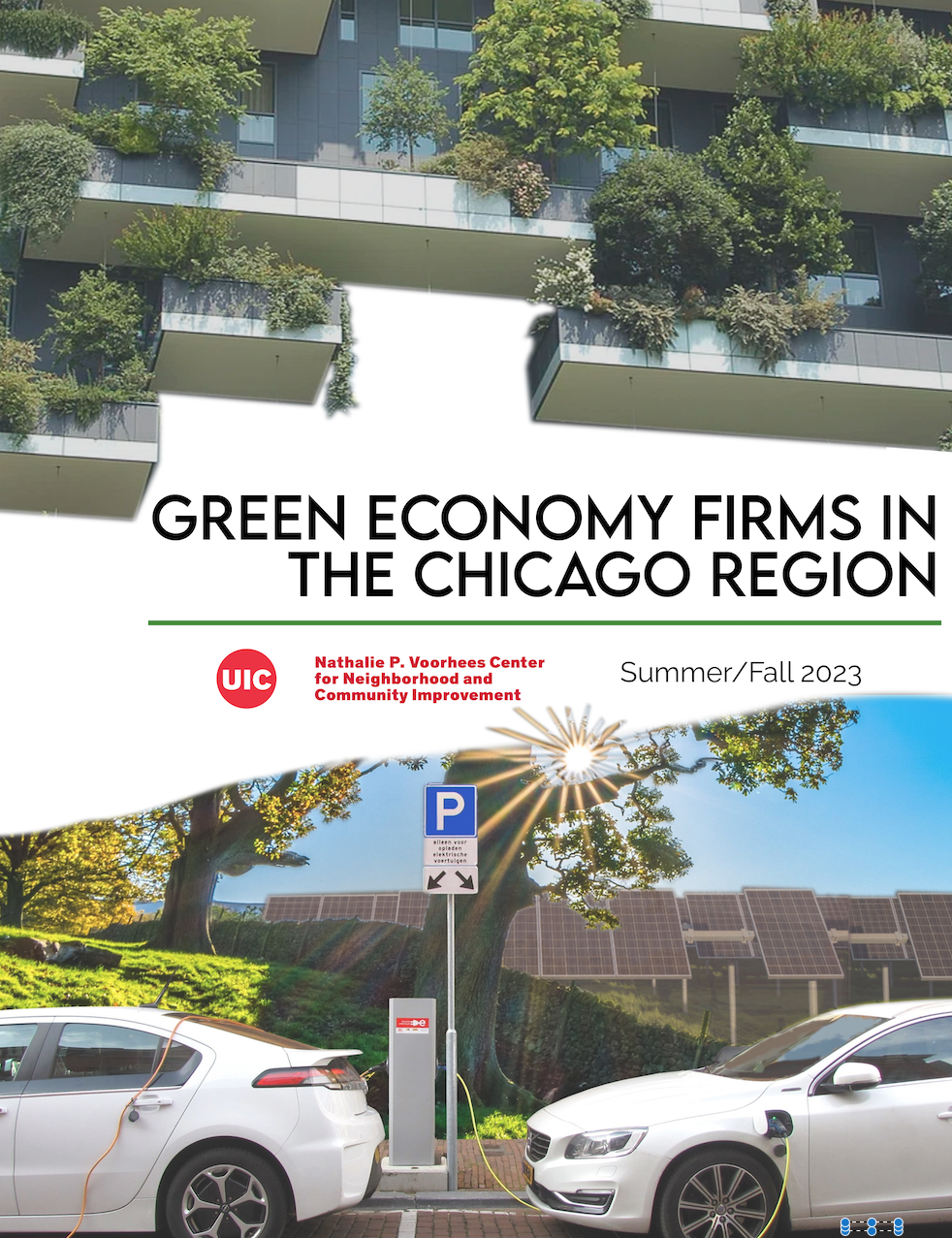
This report and its accompanying dashboard explore Green Economy firms, as well as their associated sales and employees, in 15 different clusters.
Food For Thought: the Food Ecosystem in the Chicago Region
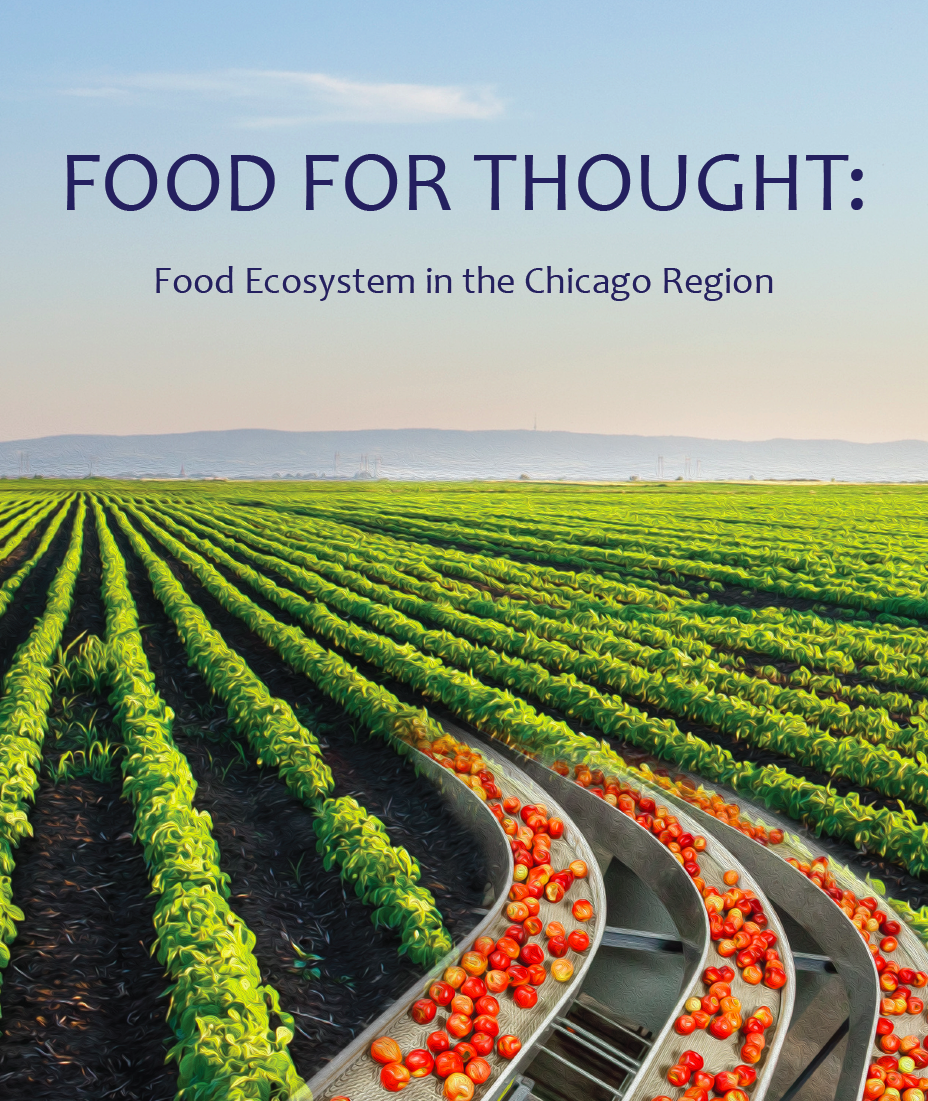
This report and its accompanying dashboard assess the state of the food ecosystem in the Chicago region by employment, establishment, and annual wage changes from 2010 to 2020.
Chicago's Clean Energy Economy
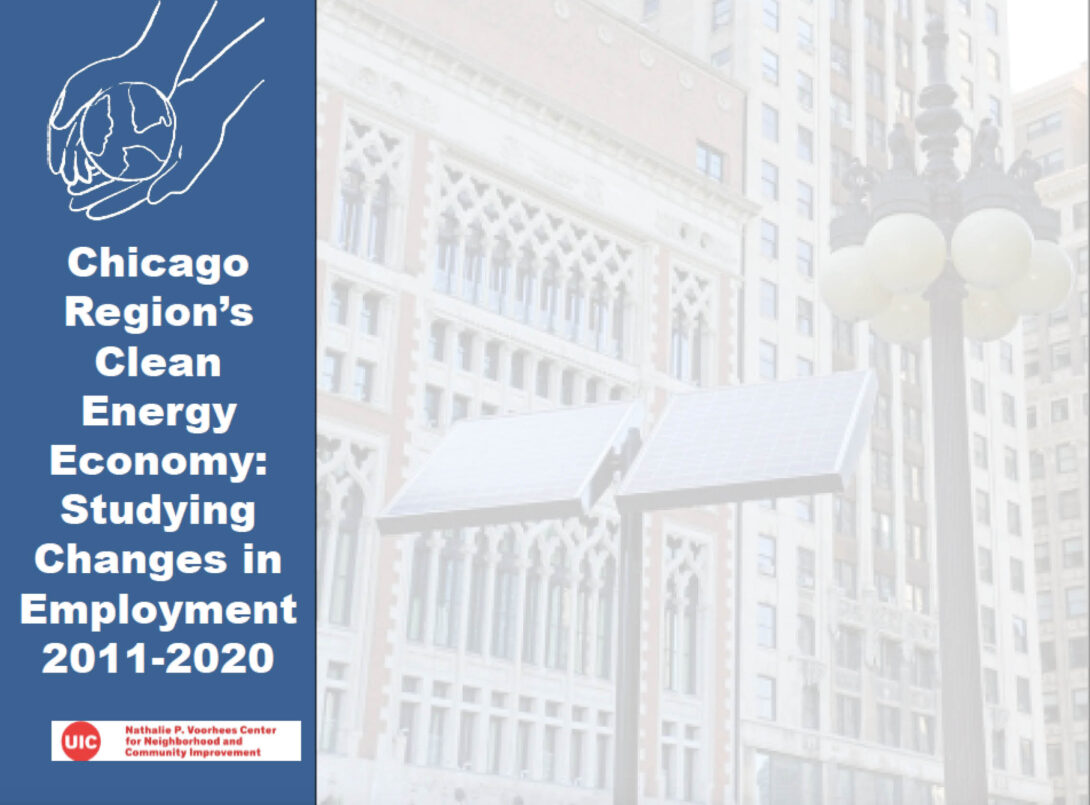
This report investigates changes in occupations classified as part of the green economy from 2011 to 2020 on regional, state, and national levels, and compares the green economy to the economy as a whole.
Digital Skills in the Green Economy in the Chicago Region
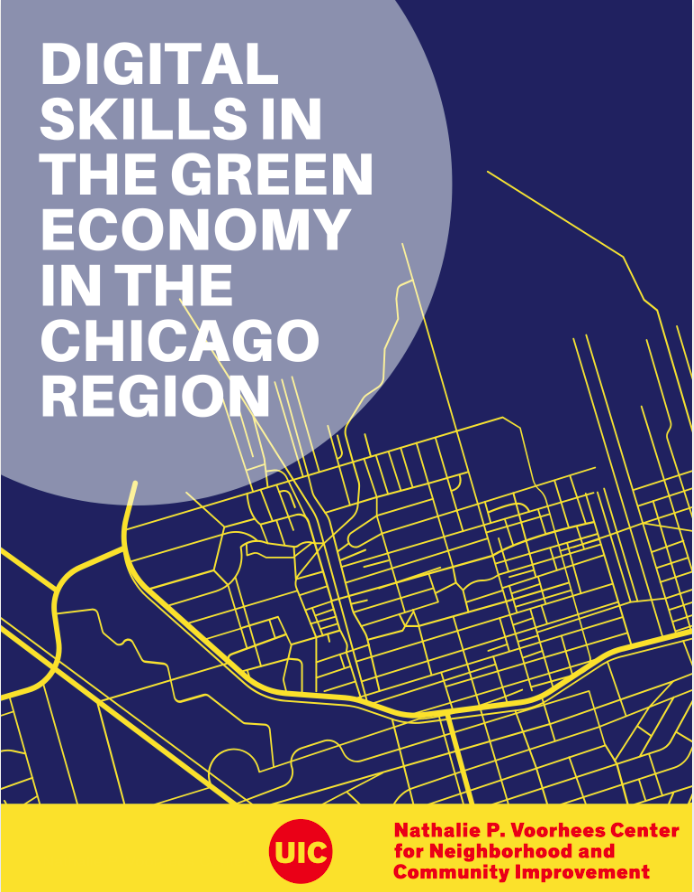
This report describes digitization in the Green Economy, educational programs for popular software used for Green Economy occupations, and gaps where certain software education is lacking in the Chicago MSA region.
Green Economy Occupations in the Chicago Region
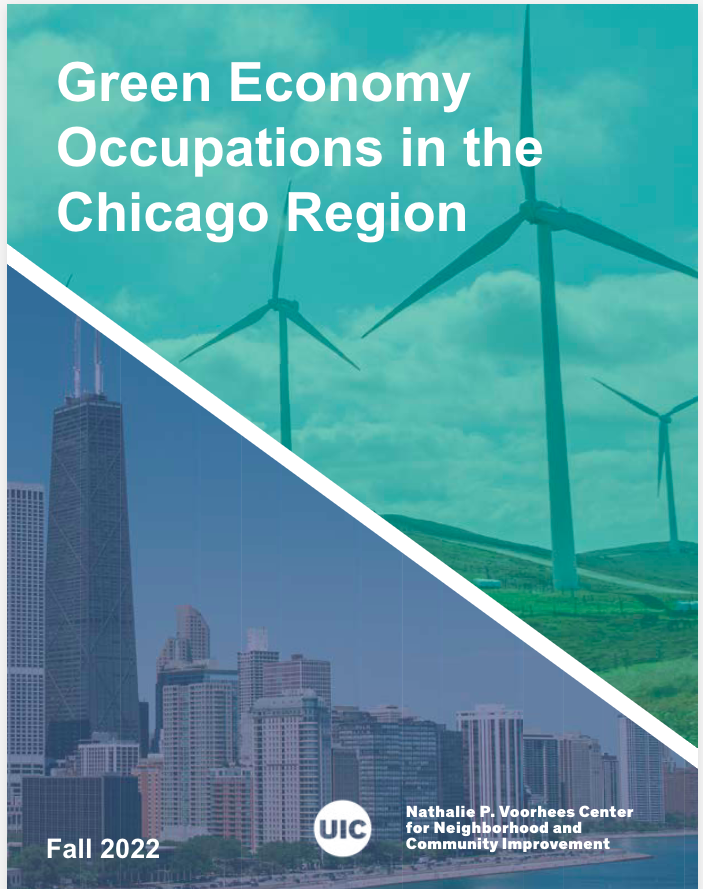
This report and its associated one-pager tool summarizes information on technologies, certifications, economic data, and the main tasks associated with the job for 264 Green Economy occupations in the Chicago region, capturing more than 1 million workers. We find that these jobs are better paying and have lower educational barriers to entry, compared to the economy as a whole.
The Landscape of Green Infrastructure in Chicago
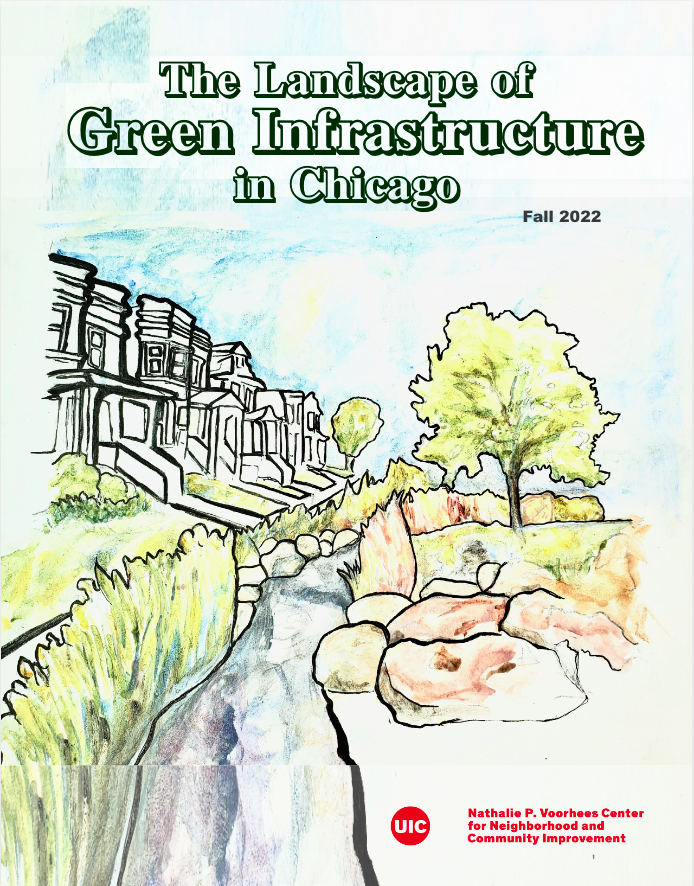
This report gives an overview of the existing green infrastructure economy in the Chicago region; outlines industry challenges and identifies strategies to address said challenges; and provides an analysis of growth and concentration of core occupations associated with green infrastructure work. It also explores the need to consider equity issues in this industry. We find that more than half of green infrastructure-related occupations are growing and have a strong concentration in the Chicago metropolitan area.